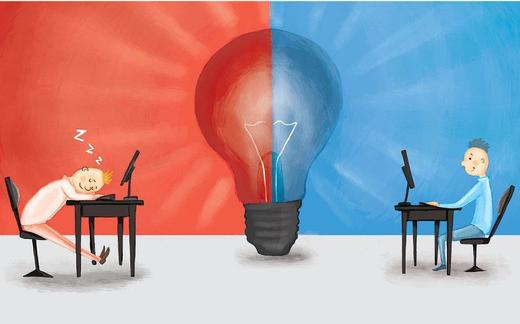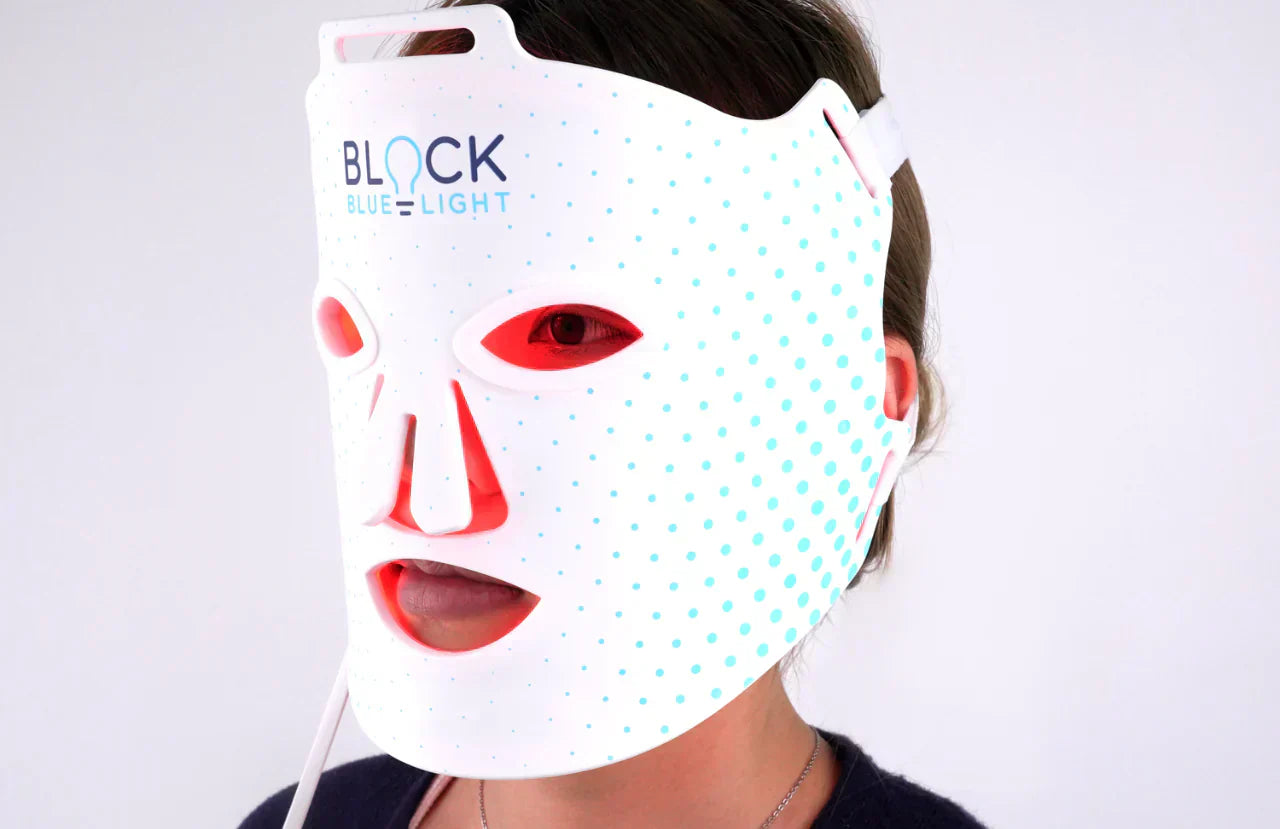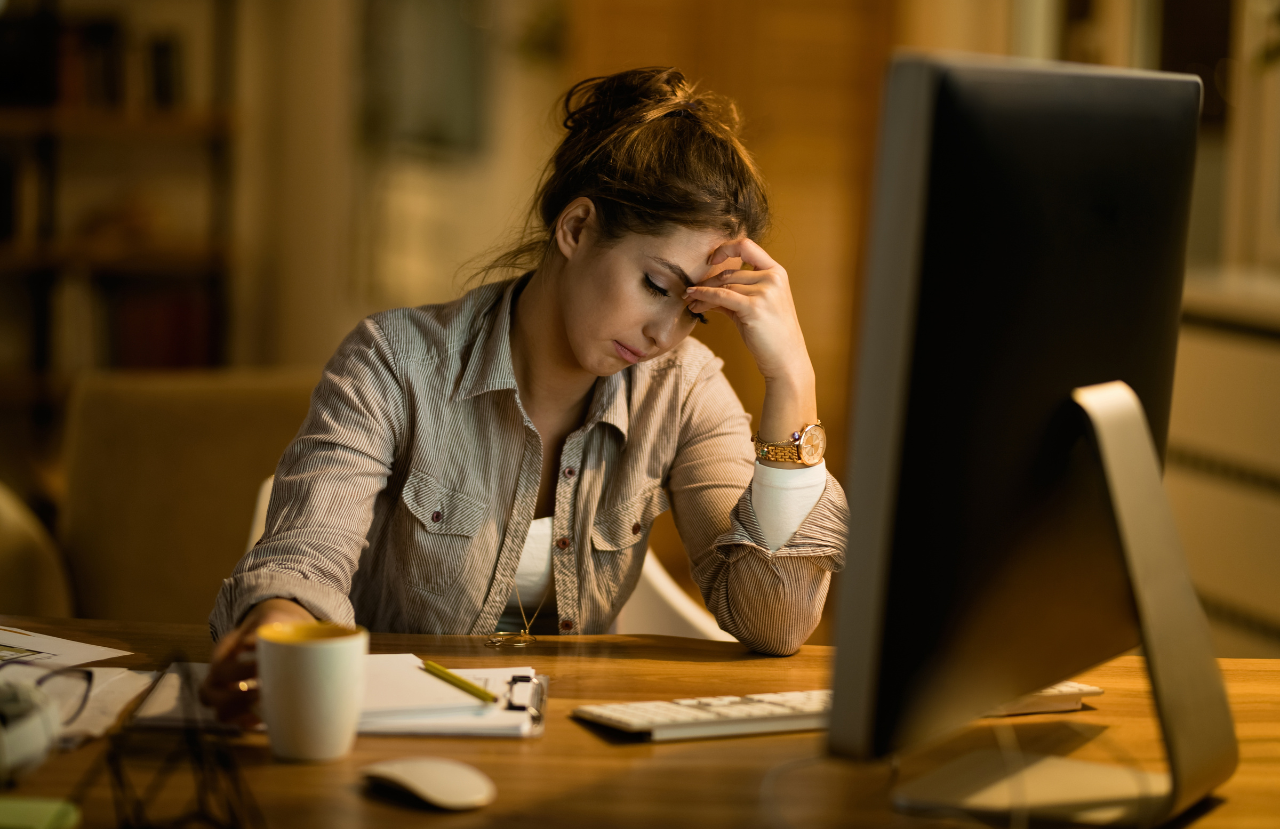There are thousands of factors that affect productivity, mood, and mental health, and not all of them are in our control. Distracting coworkers, repetitive meetings, and tight deadlines are part of working as part of a team, just as crying children, messy dishes, and the allure of television are part of home life.
One thing that is increasingly in your control is the lighting in your surroundings. The light around you has a direct impact on your productivity, mood, and mental health. Optimizing it for your needs can have a major positive impact on your life.
While LED lighting is incredibly efficient and environmentally friendly, we are discovering that it has a time and a place to be used. If it’s used at the wrong time, it can affect you negatively.
Up until recently, LED light manufacturers were prioritizing energy efficiency through their research and development. However, in order to compete, future manufacturers will also have to prioritize the biological impact of their lighting.
LEDs were first made with cool, blue light, but there are now LED lights available that can adjust to the time of day to have the appropriate temperature. That feature is incredibly important to maximize the health and wellbeing of the people exposed to the light.
Some of the ways cool and warm light effects you are listed below. Not everyone is affected in the same way. It’s important to figure out what your needs are and customize accordingly.
How Light Affects Your Productivity

Apart from being necessary in order to see, proper lighting at work can help make workers more productive. Poor lighting can give them problems like headaches and eye strain, which will decrease their productivity.
Unfortunately, this is common in many office buildings and schools. Dim fluorescent lights are the leading cause of headaches and eye strain. It will also make workers and students more tired, anxious, and cranky.
When you’re at work or school, you should get as much natural light as you can. If natural light isn’t available, artificial light that closely mimics natural light should be used.
Brighter Isn’t Always Better
The light around you should resemble the natural light outside. LEDs are able to create cool, blue light that closely resembles natural light. However, balance is necessary. Intense light is just as harmful as dim light. Make sure the lighting in the room is balanced throughout and doesn’t turn on and off suddenly.
If the lights are too bright, you’ll end up with a room full of people with migraines. That’s something that dim and bright light both have in common. A possible solution to this issue if you can not control the lighting in your office is, blue light filter glasses. These glasses will protect your eyes from an over exposure of blue light that comes from your computer screen or from the lighting fixtures in your office.
As you will find out later, natural, cool, blue light is great for productivity but not so great for your mood and mental health. Make sure you don’t light your home the way you light an office.
Optimize for Natural Light

Make sure you aren’t sticking someone in a dark corner with nothing but a lamp. You’re setting them up for failure by doing that. This goes double for “offices” without any windows. An office without a window isn’t an office; it’s a closet. And a classroom without a window might as well be a prison.
View, Inc. found that,“Workers sitting close to a window that optimized daylight exposure reported a 2 percent increase in productivity – the equivalent of an additional $100,000/year of value for every 100 workers or around $2m over the window's lifetime.”
You might think that distractions from outside will make people less productive, but a lack of natural light is far worse. You will end up with a tired, cranky room of people who are more likely to doze off than give you 100%.
One Size Doesn’t Fit All
Different amounts of lighting are necessary for different tasks. Task lighting will be necessary to make sure everyone has the light they need.
If possible, overhead lighting should be able to be adjusted in sections. One area of the office can be brighter than another. And make sure no one is facing artificial lights.
According to Stunning Motivation, “It is always advisable to arrange the office furniture in a way that the workers face opposite the artificial lighting. This is because this reduces the rate at which workers will have direct contact with the lighting, which would otherwise cause workers to get eye strain and headaches.”
Someone who works on a computer will need different lighting than someone who works on paper. Managers in the office will need different lighting than workers on the warehouse floor. Everything should be customized for the task that is being completed.
How Light Affects Your Mood

Natural light is great for staying alert and productive, but it certainly isn’t relaxing. If you surround yourself with this kind of light constantly, you’ll end up restless and exhausted.
That’s why we need sunglasses, an umbrella, and a hat at the beach. The beach is a place to relax, but it’s impossible to relax with the sun bearing down directly on you.
When you get home from work, you should walk into warm light that helps you relax after a day of work. And if you work from home, your office should be lit differently than the rest of your house.
Warm Up the Office
An entire office shouldn’t be cold and productive either. Workers need a place with warm lighting to relax and take a break. A kitchen, cafeteria, or break room isn’t a place to be productive, and the light should reflect that.
Any other area that’s used for socializing should have warm lighting as well. If you regularly bring clients to the office, set up warm lighting in the waiting area.
And conference rooms should be warmer than the cubicles and colder than the break room. You want your guests to feel comfortable, but you also want them focused on the task at hand.
Increase or Decrease Your Appetite
If you find that you typically scoff down your food, dim blue light free lighting can help you slow down and enjoy it. However, you should keep your kitchen brighter because it is believed to help you make better food choices.
When you go out to eat, you can’t control the light. If you’re going to a restaurant that is dimly lit, try to decide what you want under bright light before you arrive.
According to Mental Floss, light can even affect taste. They say, “One 2009 study, for instance, found that background lighting affected how much a group of volunteers liked a particular brand of wine, possibly because of the way different kinds of light affected the wine’s color.”
Stay Away From Screens at Night

Most screens give off unnatural amounts of blue light. If you set up your home with warm blue light free lighting but stare directly into your phone after sunset, your warm lighting will be for nothing. Some phones, tablets, and computers have night modes, but this only helps slightly. Installing a blue light filter for your phone is also a good solution.
Spend at least 1-2 hours before bed without looking at a screen. Read a book, meditate, or sit on the couch with a pet instead. Even watching TV from far away is better than staring into your phone. The best protection to ensure you have no blue light exposure after sunset is to wear a pair of 100% blue and green light blocking glasses, these glasses remove all the wavelengths of light that send signals to your brain its daytime. Wearing these glasses after sunset allows you to experience true darkness and allow your body to wind down for deep and restful sleep.
The lighting in your bedroom is especially important for your sleep. Less light is better here, and you should keep TVs out of your bedroom. Using our Twilight bedtime bulbs in the bedroom are a perfect pre-bed lighting source.
The bedroom should be used exclusively for bedroom activities. This will help your brain associate the room with sleep, helping you fall asleep faster.
When you wake up, try to wake up with sunlight in the room. Waking up to an alarm clock and a pitch-black room will make it harder to get out of bed in the morning. Natural light will help you fully wake up sooner.
How Light Affects Your Mental Health
Blue Light Causes Sleeping Problems
The most common mental health condition related to lighting is insomnia. The increase in blue light because of electronic screens and conventional LED lighting has thrown off our circadian rhythms. By staring at your phone, watching TV, or even opening the fridge, you’re tricking your brain into thinking it’s still daytime.
If you look at your phone right up to bedtime, or have standard LED lights on, you will have lower melatonin levels and make it more likely that you’ll have trouble falling asleep. This is why it’s important to keep screens and bright lights out of your bedroom and spend some time in dim light blue free lighting before bed. Consider installing blue-free light bulbs in your room in order to relax your mind and not stimulate it as much as possible.
However, trouble sleeping isn’t the only mental health condition that poor lighting can cause. Poor lighting is also known to cause seasonal depression and heightened anxiety. A possible solution to this issue could be using a red-light therapy healing light. These lights give you exposure to red and infrared light healing wavelengths which can repair a circadian rhythms, as well as the body from workouts and aches and pains. They also can improve the appearance of skin.
Bright Lights Cause Anxiety
People who already struggle with anxiety tend to be triggered by flickering lights and too much blue light. However, anyone can experience anxiety, even if they don’t have a diagnosed disorder.
A bright light that shines directly in someone’s eyes will cause anxiety. It’s a natural response to a negative situation. Make sure your lighting isn’t too harsh.
Overhead lighting should be bright enough to light the room, but task lighting should be used to brighten specific areas. Don’t try to make your overhead lighting so bright that it covers every inch of the space; it will make the room uncomfortable. Our SweetDreams bulbs emit no blue light but still enough light to be used through out the house where you need good task lighting.
If blue light is causing you to have sleeping problems or heightened anxiety, blue light blocking glasses can help you cut down on your daily exposure to blue light. However, the next condition actually benefits from more exposure to blue light.
Dim Lights Cause Depression
Make sure your lighting also isn’t too dim. Seasonal depression, also known as Seasonal Affective Disorder (SAD), is brought on by a certain time of the year. Most commonly, people experience it during winter because of a lack of sun exposure.
It has all the same symptoms of depression but is treated slightly differently. Because it is brought on by lack of light, medication and therapy likely won’t be enough to treat it. Light therapy is usually prescribed as well.
You will be exposed to bright blue light in the morning after you wake up. This light will either be natural or mimic natural light for the best results. They key here is to use a full spectrum light. Many LED wake lights are poorly designed because they just spike the blue light with none of the other beneficial wavelengths we see in nature. Too much blue light in absence of other wavelengths has been shown to cause eye damage.
The best treatment is to get outside and spend some time in the sun. This isn’t always comfortable or possible in the winter, so a full spectrum artificial light that mimics the sun is sometimes necessary.
What Are Your Lighting Needs?
Everyone’s lighting needs are different. It’s time to stop looking for one-size-fits-all lighting solutions. Luckily, many companies are offering solutions that can be customized to individual needs.
Do you need more blue light in the morning? Invest in LED lighting for the rooms you spend time in the morning. Do you need warm light to get ready for bed? Our Blue Free lighting solutions may be perfect for you.
There might not be much you can do at work, but it doesn’t hurt to ask your boss about improvements that can be made. If you’re the boss, why not make improvements? You’ll have a happier more productive workforce.
According to Forbes, “Personalized lighting options can help create more inclusive work environments. One such way is the use of biodynamic lighting which can then adjust the lighting during the day for the tone and illuminance as per natural daylight levels outside, and also the individual requirements of the user. This way the employees feel more in control of their work environments, which has been shown to increase their levels of happiness and productivity in the workplace.”
Is the lighting in your office causing problems? Are you thinking about optimizing the lighting in your home? Let us know in the comments below!





